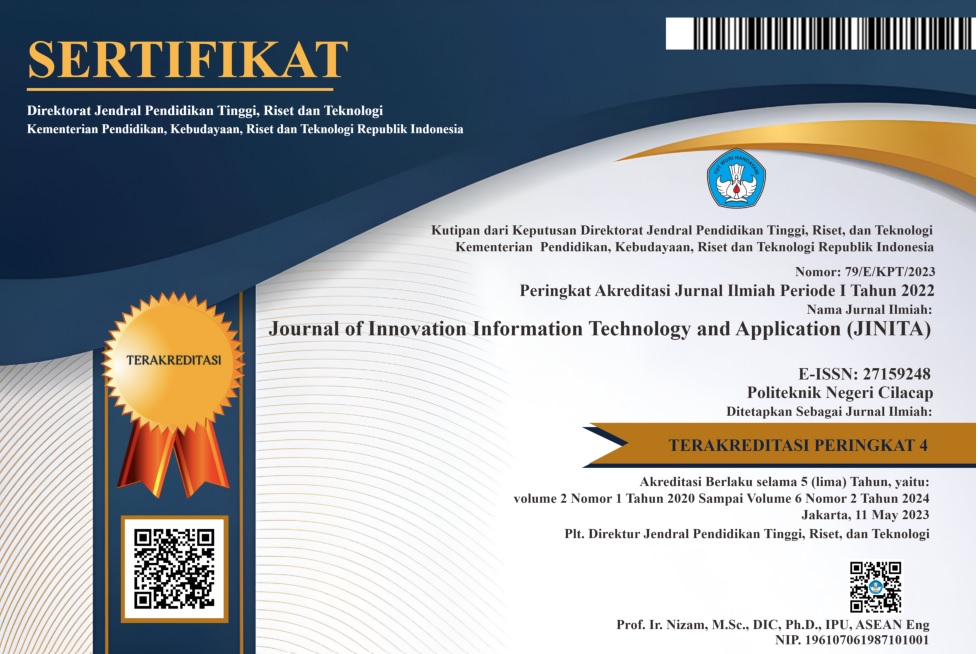Penerapan Metode Median Filtering untuk Optimasi Deteksi Wajah pada Foto Digital
 Abstract views: 513
,
Abstract views: 513
,
 PDF (Bahasa Indonesia) downloads: 399
PDF (Bahasa Indonesia) downloads: 399
Abstract
Face detection in digital photos aims to get the face area in the photo. Problems often occur when detecting faces, namely there is a lot of noise in digital photos so that it affects the detection process. Therefore, in this study apply the median filtering method to improve digital photos by reducing noise in the photos to be tested. The advantage of using this filter is to keep the edges smooth while reducing noise which aims to improve image quality. The ability of this method is measured using the parameters of Mean Square Error (MSE) and Peak Noise to Signal Ratio (PNSR). When the MSE value obtained is low and the PNSR value obtained is high, the results can be said to be good. The method used to detect faces in this research, viola-jones, was chosen because it is one of the face detection procedures with a high level of accuracy and good computational ability. The sample used in this study consisted of 10 digital photos taken using a Samsung A11 smartphone camera with a resolution of 13 mega pixels and 8 mega pixels in JPEG format. The results obtained in this study are the best error values in MSE 0.9517 and PSNR 24.2804. Based on these results, it can be concluded that the mean filtering method is feasible to be used in the case of face detection in this digital photo
Authors who publish with this journal agree to the following terms:
- Authors retain copyright and grant the journal right of first publication with the work simultaneously licensed under a Creative Commons Attribution License that allows others to share the work with an acknowledgement of the work's authorship and initial publication in this journal.
- Authors are able to enter into separate, additional contractual arrangements for the non-exclusive distribution of the journal's published version of the work (e.g., post it to an institutional repository or publish it in a book), with an acknowledgement of its initial publication in this journal.
- Authors are permitted and encouraged to post their work online (e.g., in institutional repositories or on their website) prior to and during the submission process, as it can lead to productive exchanges, as well as earlier and greater citation of published work (See The Effect of Open Access).
















